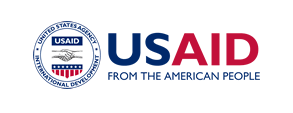The Health Policy Project ended in 2016. Work continued under Health Policy Plus (HP+) until 2022.
NEWS & VIEWS

Photo by Jeffrey V. Lazarus
Jay Gribble, Deputy Director, FP/RH and Senior Fellow
Health Policy Project, Futures Group
October 6, 2014
At the opening of the Third Global Symposium on Health Systems Research, Ambassador Deborah Birx, the U.S. Global AIDS Coordinator, talked about the progress that PEPFAR has made in responding to the global AIDS pandemic. The numbers are impressive: 6.7 million on ART; 1 million babies born AIDS-free because of access to PMTCT; 4.7 million men opting for voluntary male medical circumcision; and 17 million receiving HIV care and support. She attribute these successes to doing, “the right things, in the right places, at the right times.” These three “rights” drive home a key point about how we can best use knowledge and resources to tackle the range of health conditions that people experience.
“The right things.”
In the case of HIV, combined prevention is one of those right things. Scientists have conducted research to identify what works to reduce the spread of HIV, and the combination of treatment and behavioral interventions have proven effective. Whether we’re trying to prevent HIV or unplanned pregnancy—research has taught us what to do. For each of these health outcomes (HIV and pregnancy), the mechanisms of “transmission” have been studied and are fairly well understood. The challenge is to change the social norms and behaviors that prevent good health. . Avoiding unprotected sex goes a long way to preventing transmission of HIV; use of modern contraception goes a long way to avoiding unintended pregnancy. Yet it is very difficult to get people to change their behaviors. The resources put toward HIV have helped reduce the number of new cases, but challenges to achieving the goal of an AIDS-free generation remain.
“The right places.”
Drawing on GIS mapping that my colleagues at the USAID and PEPFAR-funded Health Policy Project carried out, Ambassador Birx made a clear case for using data to identify where HIV is concentrated and to target resources to effectively provide treatment and prevent transmission. Not everyone is equally affected by HIV, and it makes sense to concentrate efforts where they are most needed. In the field of family planning and reproductive health, we have the demographic and health surveys that help identify where unmet need for family planning is greatest, and where adolescent childbearing continues to undermine the futures of large numbers of girls. Yet somehow, we seem to be missing the opportunity to do, “the right things, in the right places.” As a result, approximately 40 percent of pregnancies around the world are unplanned (Kott, 2011).
“The right time.”
Timeliness is critical. Getting information, services, and treatment to people when they need them is what leads to success. I look at the incredible results from PEPFAR and know that they reflect the program’s ability to deploy resources on a timely basis. Especially in the case of HIV, timeliness can mean the difference between life and death. Ambassador Birx reminded us that understanding the needs of key populations is central to a timely response. She pointed out that in Africa the most vulnerable group for HIV continues to be young women, yet many countries are hesitant to provide services for them. Most services are not youth friendly, HIV testing of youth is shunned, and the idea of integrating services to more easily meet the needs of young women is far from a reality. As I think about family planning and reproductive health, timeliness also matters. Working to change behaviors, making contraception accessible, and addressing underlying gender biases all need to happen now. Delaying has real consequences.
Ambassador Birx’s message resonates with me as we who work in global health move toward developing people-centered health systems. She’s correct—when we do, “the right things, in the right places, and at the right time,” we see favorable results. Following Ambassador Birx’s “rights” will help people around the world uphold their own rights—their right to health, autonomy, and to achieve their potential—so that they lead healthy, productive lives.
What's New
- Something to Build On: “Innovation Exchange” Celebrates the Health Policy Project’s Close and a New Beginning
- What Will it Take for Tanzania to Achieve ART Targets and Ensure Long-Term Sustainability of the HIV Response?
- Helping Kenya’s County Leaders Advocate for Increased Health Investments
- HPP Holds Working Meeting on Ensuring Responsible PEPFAR Transitions for Key Populations
- Health Policy Project Celebrates 2016 International Women's Day
- HPP Staff Participate in White House Conference on HIV Stigma Reduction

